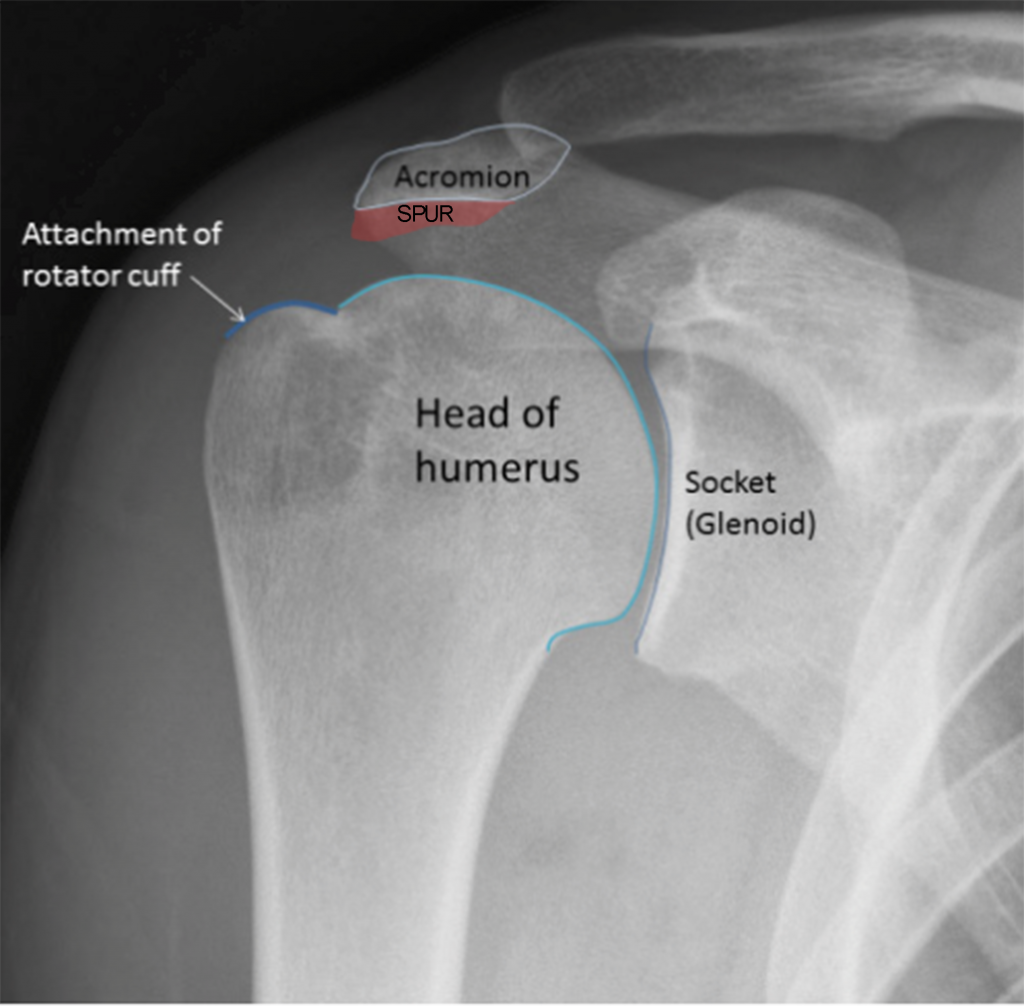ROTATOR CUFF DISEASE
Rotator cuff disease is a common problem in those approaching their 50s, 60s and beyond. Often rotator cuff tears are associated with impingement pain, resulting in weakness when raising the arm. In more advanced cases pain at night may be a problem causing trouble while sleeping on the affected side.
ANATOMY
The shoulder is a ball and socket joint. The ball is large and the socket is small. In many ways the size and shape of the shoulder joint are not dissimilar to a golf ball sitting on a golf tee. In order to stabilize this ball-on-socket design, an array of 4 muscles and their tendon cloak the ball, arising from the wing bone. These muscles, help stabilize the head of the shoulder and assist in powering the shoulder in all directions. Above the ball and socket there is a lubricating fluid sac called the bursa.
IMPINGEMENT PAIN
Burstitis is the inflammation of the fluid filled sac above the shoulder joint. This occurs when there is excessive rubbing of the rotator cuff tendons on the arch of bone above them. Due to the chronic upwards pressure and inflammation a with a bony spur often forms above the shoulder joint on the end of the acromion.
Over time this can cause persistent pain over the top and outside of the shoulder. The pain may often radiate down the arm toward the elbow.
TREATMENT
Non-Surgical
Physiotherapy can be extremely helpful for impingement. By strengthening the muscles of the rotator cuff and the anterior deltoid much of the pain associated with condition can settle down resulting in improved function.
Steroid injections can help to settle down the pain of bursitis. Used as one or two doses this can be very helpful. Excessive use can cause further tendon damage.
Surgical Treatment
The aim of this surgery is to remove the bony spur and clear the inflamed bursa. This is done as a day or overnight procedure and is achieved with special bone anchors and keyhole instruments.
If there is a tear in the rotator cuff present this may also be repaired at the same time. Keyhole surgery for impingent has some advantages over traditional open or mini open approaches.
- Less pain
- Shorter hospital stay (day case or overnight only)
- Lower chance of infection
- Faster initial rehabilitation
- Less stiffness (restriction of movement) following the surgery
- Better ability to identify and treat other areas of damage
REHABILITATION
If the surgery was done simply for impingement early exercise is recomeneded to get the shoulder moving.
Generally early focus for physiotherapy will be around regaining the full range of motion. Strengthening then follows.
More information can be found on the physiotherapy section of this website.
Work
It is normal to feel discomfort in the shoulder during the first 6-8 weeks.
Full recovery may take 6 months.
Return to work is generally advised for office based work at 2 weeks.
Physical work can recommence at 6-8 weeks with modified duties.
Manual work should be commenced at 3-4 months
Exercise
Running can be restarted at 2 weeks
Swimming – Breaststroke at 2 weeks, freestyle 2 months

